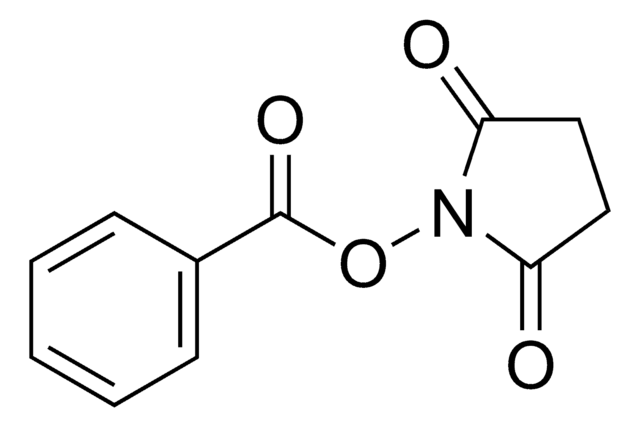457078
1-Pyrenebutyric acid N-hydroxysuccinimide ester
95%
Synonym(s):
N-Hydroxysuccinimidyl Pyrenebutanoate; 2,5-Dioxopyrrolidin-1-yl 4-(pyren-1-yl)butanoate
About This Item
Recommended Products
Quality Level
Assay
95%
form
powder, crystals or chunks
composition
Carbon: 70.7-78.9%
color
faint beige
mp
132-136 °C (lit.)
application(s)
diagnostic assay manufacturing
hematology
histology
storage temp.
room temp
SMILES string
O=C(CCCc1ccc2ccc3cccc4ccc1c2c34)ON5C(=O)CCC5=O
InChI
1S/C24H19NO4/c26-20-13-14-21(27)25(20)29-22(28)6-2-3-15-7-8-18-10-9-16-4-1-5-17-11-12-19(15)24(18)23(16)17/h1,4-5,7-12H,2-3,6,13-14H2
InChI key
YBNMDCCMCLUHBL-UHFFFAOYSA-N
Related Categories
General description
Application
Other Notes
Signal Word
Warning
Hazard Statements
Precautionary Statements
Hazard Classifications
Eye Irrit. 2 - Skin Irrit. 2 - STOT SE 3
Target Organs
Respiratory system
Storage Class Code
11 - Combustible Solids
WGK
WGK 3
Flash Point(F)
Not applicable
Flash Point(C)
Not applicable
Personal Protective Equipment
Choose from one of the most recent versions:
Already Own This Product?
Find documentation for the products that you have recently purchased in the Document Library.
Customers Also Viewed
Our team of scientists has experience in all areas of research including Life Science, Material Science, Chemical Synthesis, Chromatography, Analytical and many others.
Contact Technical Service











